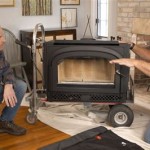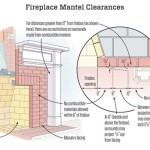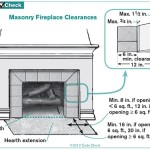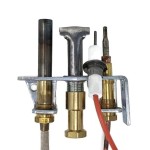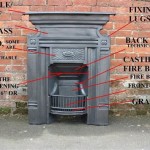Here is an article focusing on free-standing gas fireplaces, designed to provide informative reviews and key considerations for potential buyers.
Free-Standing Gas Fireplace Reviews: A Comprehensive Guide
Free-standing gas fireplaces offer a blend of aesthetic appeal, convenience, and heating efficiency, making them a popular choice for homeowners seeking supplemental heating or a visually engaging focal point. Unlike traditional fireplaces, these units require no chimney, simplifying installation and expanding placement options. This article analyzes the features, benefits, and considerations involved in selecting a free-standing gas fireplace, presenting reviews and insights to aid informed decision-making.
The market for free-standing gas fireplaces is diverse, encompassing various styles, sizes, and heating capacities. Models range from compact units suitable for smaller rooms to larger, more powerful options capable of heating significant living spaces. The choice of a specific model depends on several factors, including the room size, desired heating output, aesthetic preferences, and budget constraints. Before delving into specific reviews, it is crucial to understand the key aspects to consider when evaluating different free-standing gas fireplace options.
Key Considerations Before Purchase
Several factors should be carefully evaluated before purchasing a free-standing gas fireplace. These considerations will help ensure that the chosen unit meets the homeowner's specific needs and expectations.
Heating Capacity (BTU Rating): The British Thermal Unit (BTU) rating indicates the amount of heat the fireplace can generate per hour. A higher BTU rating translates to greater heating capacity. Determining the appropriate BTU rating involves considering the square footage of the room to be heated and the local climate. A unit with insufficient BTU output will struggle to adequately heat the space, while an excessively high BTU rating might lead to overheating and uncomfortable temperatures. Consulting a heating professional can provide accurate guidance on the appropriate BTU rating for a specific application.
Venting Requirements: Free-standing gas fireplaces are categorized by their venting system, either direct vent or vent-free. Direct vent models draw combustion air from outside and vent exhaust gases externally, typically through a wall or roof. They provide a sealed combustion system, minimizing the risk of indoor air pollution. Vent-free models, also known as ventless fireplaces, do not require external venting. They use room air for combustion and release exhaust gases directly into the room. While vent-free models offer installation flexibility, they require proper ventilation to prevent the buildup of carbon monoxide and other potentially harmful gases. Many jurisdictions have restrictions or prohibitions on the use of vent-free gas fireplaces, so it is essential to verify local building codes before considering this option.
Aesthetic Design and Style: Free-standing gas fireplaces are available in a wide range of designs, from traditional to contemporary. Factors such as the fireplace's shape, finish, and flame presentation contribute to its overall aesthetic appeal. Some models feature realistic log sets and adjustable flame heights to mimic the ambiance of a wood-burning fireplace. Others incorporate modern design elements, such as clean lines, glass panels, and decorative stones. Choosing a style that complements the existing décor and personal preferences is crucial for creating a visually appealing and harmonious living space.
Examining Popular Free-Standing Gas Fireplace Models
The following presents an overview of representative models from popular manufacturers, highlighting their strengths, weaknesses, and suitability for different applications. These reviews are based on publicly available information and user feedback.
Model A (Direct Vent): This model is generally praised for its ease of installation and realistic flame presentation. The direct vent system ensures safe and efficient operation, while the optional remote control adds convenience. However, some users have reported that the unit can be noisy during operation, and the price point is relatively high compared to other models in its class. This model is well-suited for homeowners prioritizing safety, convenience, and aesthetic appeal, even at a premium price.
Model B (Vent-Free): This vent-free model stands out for its affordability and installation flexibility. It requires no venting, making it suitable for rooms without existing chimney access. However, users should be mindful of the ventilation requirements and local building codes. Some reviewers have noted that the heat output may not be sufficient for larger rooms, and the flame presentation might appear less realistic compared to direct vent models. This model is a cost-effective option for smaller spaces where ventilation is adequate and aesthetic realism is less of a primary concern.
Model C (Direct Vent, Linear Design): This modern fireplace emphasizes sleek lines and contemporary styling. Its linear design creates a visually striking focal point, and the direct vent system offers safe and efficient operation. While the aesthetic design is appealing to many, some users find the price to be prohibitive. Furthermore, the linear design might not be suitable for all room styles. This model is a good choice for those seeking a modern aesthetic and are willing to invest in a premium direct vent fireplace.
Maintenance and Safety Considerations
Proper maintenance is essential for ensuring the safe and efficient operation of a free-standing gas fireplace. Regular inspections should be conducted to check for gas leaks, damaged components, and obstructions in the venting system. The fireplace should be cleaned periodically to remove dust, debris, and soot buildup. A qualified technician should perform annual servicing, including cleaning the burner assembly, checking the gas pressure, and inspecting the safety controls. Adhering to the manufacturer's recommendations and following safety guidelines is crucial for preventing accidents and prolonging the lifespan of the fireplace.
Carbon monoxide detectors should be installed and maintained in homes with gas fireplaces, regardless of whether they are direct vent or vent-free models. These detectors provide an early warning of carbon monoxide buildup, allowing occupants to evacuate the premises safely. It is also important to educate all household members about carbon monoxide safety and the proper operation of the gas fireplace.

Reviews For Procom Vent Free Indoor Stove 25 000 Btu Standing Dual Fuel Propane And Natural Gas Pg 2 The Home Depot

50 Free Standing Ventless Gas Fireplace Visualhunt

Enviro S Gas Berkeley Cast Iron Fs Stove

Which Is Better For Your Home Freestanding Stove Vs Fireplace Insert

Reviews For Pleasant Hearth 23 5 In Compact 20 000 Btu Vent Free Dual Fuel Gas Stove Pg 1 The Home Depot

50 Free Standing Ventless Gas Fireplace Visualhunt

Premium Gas Fireplaces Modern Or Traditional Styled Inserts And Freestanding Stoves By Cameron

Top 5 Best Gas Fireplace Stoves For A Cozy Home In 2024 Electronicshub

Freestanding Gas Fireplaces Fergus Fireplace

Supreme Novo 24 Wood Stove Friendly Fires

